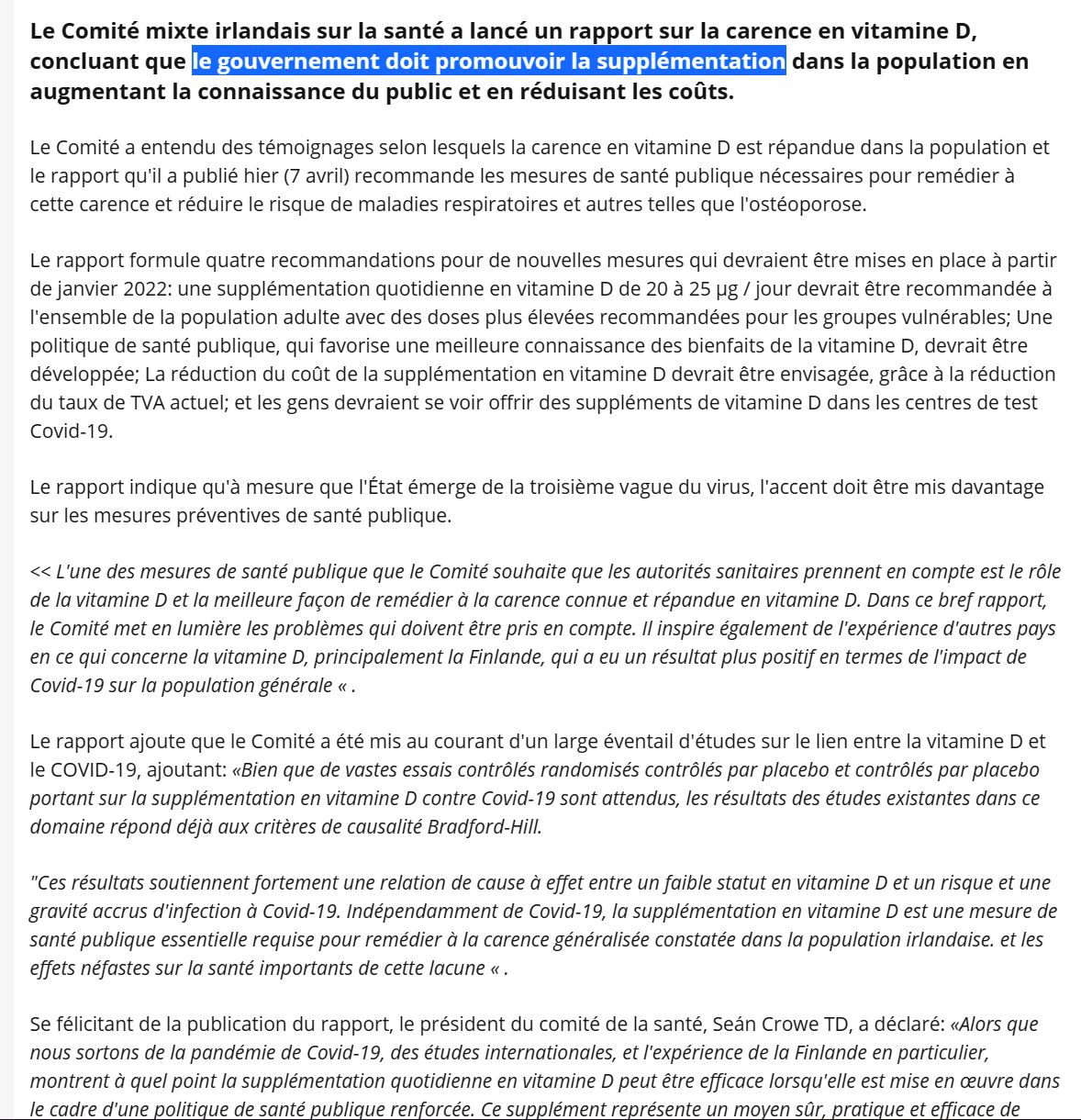Association of Vitamin D Levels, Race/Ethnicity, and Clinical Characteristics With COVID-19 Test Results
David O. Meltzer, JAMA Netw Open. 2021;4(3):e214117.
Key Points
Question Are differences in vitamin D levels greater than levels traditionally considered sufficient (30 ng/mL) associated with having test results positive for coronavirus disease 2019 (COVID-19) in White and in Black individuals?
Findings In this cohort study of 4638 individuals with a measured vitamin D level in the year before undergoing COVID-19 testing, the risk of having positive results in Black individuals was 2.64-fold greater with a vitamin D level of 30 to 39.9 ng/mL than a level of 40 ng/mL or greater and decreased by 5% per 1-ng/mL increase in level among individuals with a level of 30 ng/mL or greater. There were no statistically significant associations of vitamin D levels with COVID-19 positivity rates in White individuals.
Meaning These findings suggest that randomized clinical trials to determine whether increasing vitamin D levels to greater than 30 to 40 ng/mL affect COVID-19 risk are warranted, especially in Black individuals.
Abstract
Importance Deficient (ie, <20 ng/mL) or insufficient (ie, 20 to <30 ng/mL) 25-hydroxyvitamin D (also known as calcifediol) levels are more common in Black individuals than White individuals and are associated with increased coronavirus disease 2019 (COVID-19) risk. Whether COVID-19 risk is associated with differences in vitamin D levels of 30 ng/mL or greater is not known.
Objective To examine whether COVID-19 test results are associated with differences in vitamin D levels of 30 ng/mL or greater, including for White individuals and for Black individuals.
Design, Setting, and Participants This retrospective cohort study was conducted at an academic medical center in Chicago, Illinois. Participants included individuals with data on vitamin D level within 365 days before COVID-19 testing, which was conducted from March 3 to December 30, 2020. Data were analyzed from September 11, 2020, to February 5, 2021.
Exposures The last vitamin D level before COVID-19 testing was categorized as less than 20 ng/mL (ie, deficient), 20 to less than 30 ng/mL (ie, insufficient), 30 to less than 40 ng/mL, or 40 ng/mL or greater. Treatment was defined by vitamin D type and dose 14 days before COVID-19 testing and treatment changes after last vitamin D level.
Main Outcomes and Measures The main outcome was a positive result for COVID-19 in polymerase chain reaction testing. Multivariable analyses tested whether previously measured vitamin D level was associated with having test results positive for COVID-19 in White individuals and in Black individuals, controlling for months and treatment changes since the vitamin D level was measured, as well as demographic characteristics and comorbidity indicators.
Results A total of 4638 individuals (mean [SD] age 52.8 [19.5] years; 3205 [69%] women) had data for a vitamin D level within 1 year before COVID-19 testing, including 2288 (49%) Black individuals, 1999 (43%) White individuals, and 351 individuals (8%) who were another race/ethnicity (eg, Asian, Mideast Indian, >1 race). Stratified by vitamin D level, 1251 individuals (27%) had less than 20 ng/mL, 1267 individuals (27%) had 20 to less than 30 ng/mL, 1023 individuals (22%) had 30 to less than 40 ng/mL, and 1097 individuals (24%) had 40 ng/mL or greater. Lower vitamin D levels were more common in Black individuals (<20 ng/mL: 829 of 2288 Black individuals [36%]) than White individuals (<20 ng/mL: 315 of 1999 White individuals [16%]). A total of 333 individuals (7%) had test results positive for COVID-19, including 102 White individuals (5%) and 211 Black individuals (9%). Multivariate analysis controlling for time since last vitamin D level measurement was used to estimate the outcomes associated with levels 14 days before COVID-19 testing. A positive test result for COVID-19 was not significantly associated with vitamin D levels in White individuals but was associated with vitamin D levels in Black individuals (compared with ≥40 ng/mL: <20 ng/mL incidence rate ratio [IRR], 2.55 [95% CI, 1.26-5.15]; P = .009; 20 to <30 ng/mL IRR, 1.69 [95% CI, 0.75-3.84]; P = .21; 30 to <40 ng/mL IRR, 2.64 [95% CI, 1.24-5.66]; P = .01). Stratified by vitamin D level, estimated COVID-19 positivity rates in Black individuals were 9.72% (95% CI, 6.74%-13.41%) for individuals with a vitamin D level less than 20 ng/mL, 6.47% (95% CI, 3.33%-10.28%) for individuals with a vitamin D level of 20 to less than 30 ng/mL, 10.10% (95% CI, 6.00%-15.47%) for individuals with a vitamin D level of 30 to less than 40 ng/mL, and 3.82% (95% CI, 1.78%-6.68%) for individuals with a vitamin D level of 40 ng/mL or higher. Multivariate analysis in individuals with a vitamin D level of 30 ng/mL or greater found that the IRR of a positive COVID-19 test result was 0.97 (95% CI, 0.94-0.99; P = .008) per 1-ng/mL increase in vitamin D overall and 0.95 (95% CI, 0.91-0.98; P = .003) per 1-ng/mL increase in vitamin D in Black individuals.
Conclusions and Relevance In this single-center retrospective cohort study, COVID-19 risk increased among Black individuals with vitamin D level less than 40 ng/mL compared with those with 40 ng/mL or greater and decreased with increasing levels among individuals with levels greater than 30 ng/mL.
No significant associations were noted for White individuals. Randomized clinical trials should examine whether increasing vitamin D level to greater than 40 ng/mL affects COVID-19 risk.














